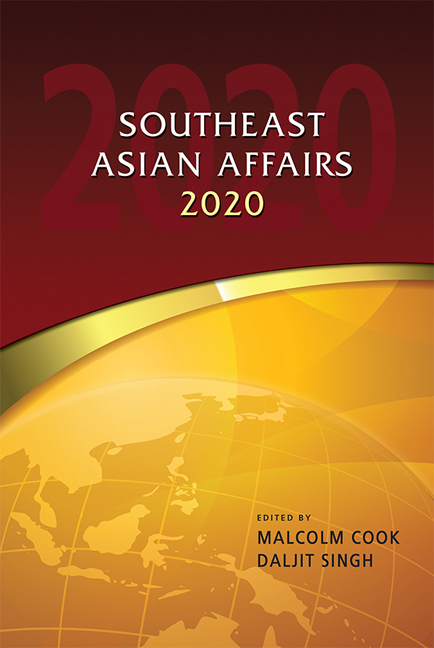Southeast Asia in 2019: Adjustment and Adaptation to Chinaâs Regional Impact
Published online by Cambridge University Press: 24 November 2020
Summary
Trends in 2018 indicated that ASEAN regionalism was under pressure, putting into question the grouping's role and function. In contrast, developments in 2019 reflect the independent and collective resolve of Southeast Asian states to manage external political and economic risk, which has had the effect of shoring up cohesiveness of the ten-member grouping, or at least compelling members to put aside regionally divisive issues in order to deal with common challenges. Firstly, and perhaps most importantly, ASEAN and its member states have had to adjust to the realities and impact of the ongoing US-China trade war in a bid to ensure economic development and growth.
Secondly, they have sought to break out from the impasse of being sidelined in the regional power play of the United States and China. Despite adhering to a hedging strategy in dealing with China and the United States in the region's management of major power politics, ASEAN member states have telegraphed a heightened consideration of China as both a dialogue and free-trade partner. Thirdly, a stronger consideration of China's political and economic role in the region did somewhat mute the assertions of claimant states against China over disputed features and waters in the South China Sea for most of 2019 until the closing months of that year. Fourthly, in seeking to manage common external challenges in a united fashion, member states—as in previous years—remained unwilling to put more direct pressure on the Myanmar government for human rights violations relating to its Rohingya crisis; a problem that become internationalized since late 2017.
Adjusting to the US-China Trade War
The US-China Trade War, which began in July 2018 when the US government led by President Donald Trump implemented its first round of tariffs and other trade barriers on China—with the goal of forcing it to make changes to what the US says are “unfair trade practices”—has further impacted Asian countries whose supply chains have been closely linked to Chinese industries and are dependent on the US market as a significant export destination. Because of the US-China trade war—amidst the prospect of a global economic slowdown that is already dampening business confidence around the world—the year 2019 saw the worst twelve months for Asia-Pacific trade in goods and services by both volume and value since the global financial crisis ten years ago.
- Type
- Chapter
- Information
- Southeast Asian Affairs 2020 , pp. 3 - 18Publisher: ISEAS–Yusof Ishak InstitutePrint publication year: 2020



